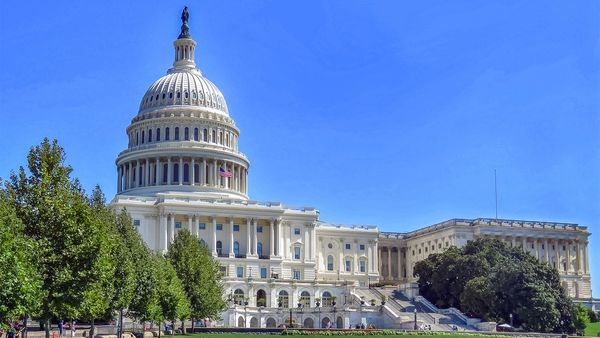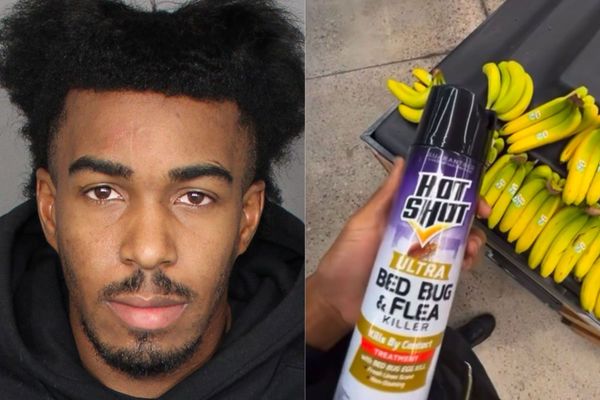SoftBank's Venture Fund lost so much money in the quarter that CEO and founder Masayoshi Son looked to military lessons from 450 years ago to make sense of it all.
Masayoshi Son showed a portrait of Tokugawa leyasu during Softbank's (SFTBY) first-quarter earnings presentation Monday, saying that he felt like the 1st Shogun of Tokugawa Shogunate after a catastrophic defeat in battle.
"Tokugawa Ieyasu didn't want to lose face, so that that he get out from the castle, had a battle, made a complete loss and suffered and came back," Masayoshi Son, CEO of SoftBank said, according to a FactSet transcript of the company's first quarter earnings presentation.
Despite Tokugawa returning to the castle beaten, embarrassed and with only a handful of soldiers by his side, the future founding father of a unified Japan ordered his men to light the Hamamatsu's castle torches, sound the war drums, and keep the castle gates open.
The idea was that any soldiers still in the field would see that all was not lost and that there was a rallying point for Tokugawa's army.
The decision had an unintended consequence.
With Tokugawa's reputation preceding him, his opponent's forces falsely assumed that the noise coming from the castle was a trap.
So instead of overrunning the fortress with their superior numbers, they made camp for the night outside of the castle.
Tokugawa took the opportunity to lead a band of 100 warriors in the middle of the night to launch a successful counterstrike. Ultimately, after the Battle of Mikatagahara, Tokugawa went on to become one of the three "Great Unifiers" of Japan.
So what does 16th century Japanese war history have to do Softbank Group in 2022? Well Masayoshi Son is glad you didn't ask.
SoftBank's Stand
If Masayoshi is Tokugawa, then the company's first quarter must have been the Battle of Mikatagahara.
"And that he actually a learned lesson and he try to remember and remind his own learnings and put it into destroying [the opposing army]," Masayoshi said.
Softbank's Vision Fund lost ¥2.93 trillion in the quarter ($21.68 billion) in the quarter, accounting for the lion's share of the company's ¥3 trillion ($23.4 billion) loss in the period.
In fact, the ¥7 trillion in lifetime Vision Fund gains are now close to nothing after two consecutive quarters of heavy losses amid a market decline in tech stocks.
The fund is declining despite realizing a gain of $5.6 billion after completely selling its stakes in Uber (UBER), online real estate company Opendoor, healthcare company Guardant and Chinese real estate and brokerage Beike.
When asked about lessons he's learned during this siege, the usually hubristic Masayoshi was introspective.
"We were making big swings; Uber, Didi, WeWork. We had spent almost ¥1 trillion level of the investment per case, so we've been making a big swing and couldn't hit the ball. That's what happened in the Vision Fund I, because my feeling was very strong, my emotion was very strong to specific companies or business," he said.
"I should learn the lesson, be more selective for the investment activities. We shouldn't have this much damage."
SoftBank's Vision for the Future
So how does SoftBank plan to stem the Vision Fund losses?
Masayoshi says there are two macro factors operating against the fund: global stock market turmoil, and the rapid decline of the Japanese yen.
But he also acknowledges that the Vision Fund public stock index declined by 31% in the quarter, at the same time the Nasdaq fell just 22%.
The good news is that the losses are slowing, as the Fund lost ¥3.5 trillion ($27.5 billion) in the May quarter.
In the past, SoftBank has used stock buybacks to buoy its stock.
When the Vision Fund took a $10 billion hit in 2021, SoftBank pledged ¥1 trillion ($8.84 billion) in share buybacks and the stock shot up as a result.
The company has spend about 70% of the funds in that buyback it authorized another ¥400 billion.
"So the remaining 30% or ¥300 billion about even though we won't use up all that ¥300 billion by... November 8. We're still committed to the repurchase program – repurchase shares up to ¥1 trillion but the most priority as our financial discipline," Masayoshi said.







